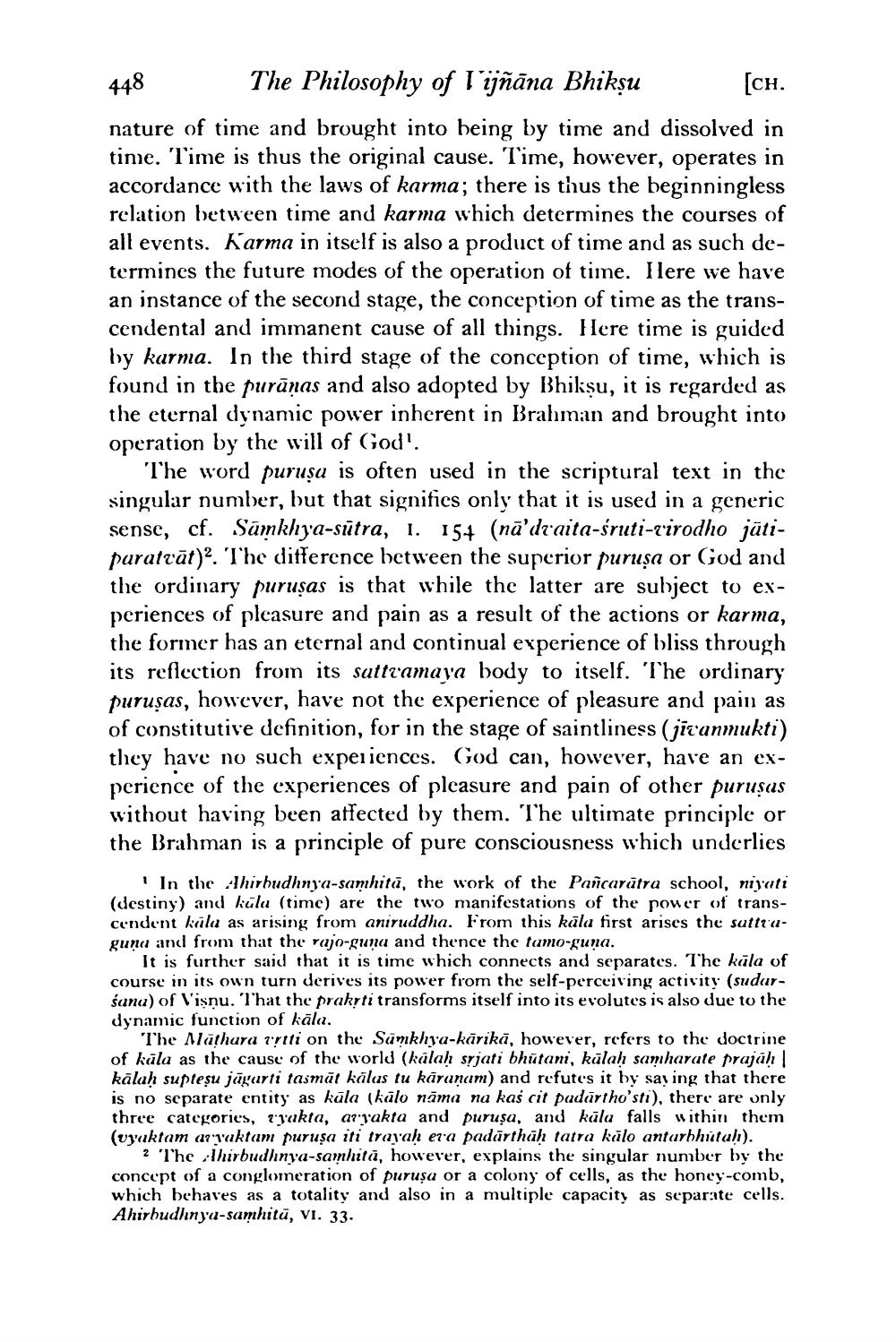________________
448
The Philosophy of lijñāna Bhikṣu [CH. nature of time and brought into being by time and dissolved in time. Time is thus the original cause. Time, however, operates in accordance with the laws of karma; there is thus the beginningless relation between time and karma which determines the courses of all events. Karma in itself is also a product of time and as such determines the future modes of the operation of time. Ilere we have an instance of the second stage, the conception of time as the transcendental and immanent cause of all things. Here time is guided by karma. In the third stage of the conception of time, which is found in the purūnas and also adopted by Bhiksu, it is regarded as the eternal dynamic power inherent in Brahman and brought into operation by the will of God'.
The word puruşu is often used in the scriptural text in the singular number, but that significs only that it is used in a generic sense, cf. Sūmkhya-sūtra, I. 154 (nā'draita-śruti-virodho jātiparatrāt)? The difference between the superior puruṣa or God and the ordinary puruṣas is that while the latter are subject to experiences of pleasure and pain as a result of the actions or karma, the former has an eternal and continual experience of bliss through its reflection from its sattramaya body to itself. The ordinary purusas, however, have not the experience of pleasure and pain as of constitutive definition, for in the stage of saintliness (jiranmukti) they have no such experiences. God can, however, have an experience of the experiences of pleasure and pain of other puruşus without having been affected by them. The ultimate principle or the Brahman is a principle of pure consciousness which underlies
' In the Ahirbudhnya-samhitā, the work of the Pancarātra school, niyati (destiny) and kulu (time) are the two manifestations of the power of transcendent kila as arising from aniruddha. From this kāla first arises the suttiaguna and from that the rajo-gunu and thence the tumo-guna.
It is further said that it is time which connects and separates. The küla of course in its own turn derives its power from the self-perceiving activity (sudarśana) of Visnu. That the prakrti transforms itself into its evolutes is also due to the dynamic function of kāla.
The Mlāthara iriti on the Samkhya-kārikā, however, refers to the doctrine of kāla as the cause of the world (kalah srjati bhūtani, kālah samharate prajah kālah suplesu jāgurti tasmāt kälas tu karanam) and refutes it by saying that there is no separate entity as kāla (kālo nama na kas cit padārtho'sti), there are only three categories, 'yakta, ar yakta and puruşa, and kāla falls within them (uyaktam ar vaktam purusa iti trajah era padārthah tatra kulo anturbhutah).
2 The Thirbudhnya-samhita, however, explains the singular number by the concept of a conglomeration of puruṣa or a colony of cells, as the honey-comb, which behaves as a totality and also in a multiple capacity as separate cells. Ahirbudhnya-samhitü, vi. 33.




